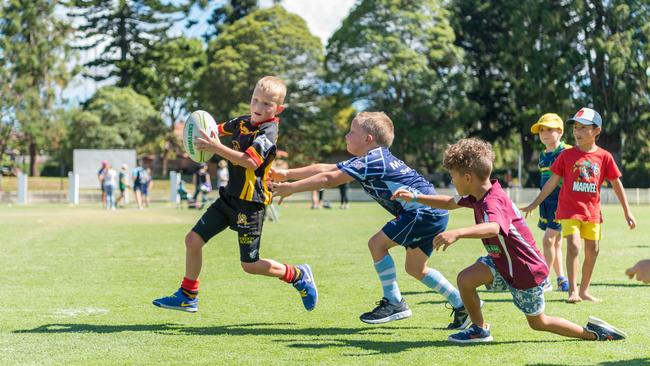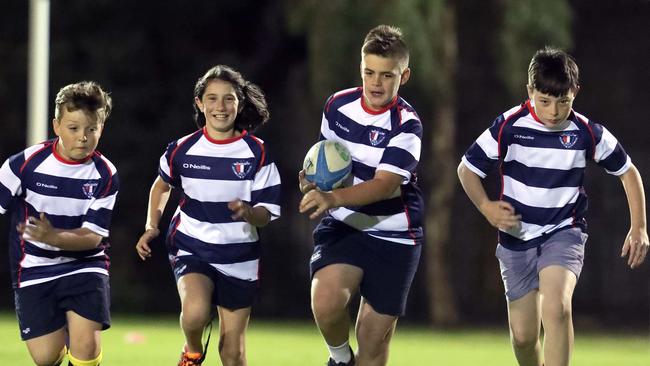Rugby to launch mandatory weight, size and skill assessments for juniors to ensure safety
ALL Australian junior rugby players aged between 10 and 15 will be subject to mandatory assessment about whether their size and ability suits their age group, or if they need to be moved.

Rugby
Don't miss out on the headlines from Rugby. Followed categories will be added to My News.
ALL Australian junior rugby players aged between 10 and 15 will be subject to mandatory assessment about whether their size - and skill - suits their age group or if they need to be moved.
In an precedented new approach to the age-vs-weight debate, rugby juniors deemed physical outliers - either big or little - will be judged on their capabilities as well, not just results on the scale.
The new Rugby Australia initiative is the first standardised testing of its type in Australian sport.

It comes as the issue of size and age in kids sport is back in the headlines following Hollywood star Russell Crowe’s column calling on rugby league to run competitions based weight — not age — to eliminate dangerous size discrepancies. New Zealand Rugby Union have weight-based junior competitions.
But the changes to RA’s size to size and age guidelines come after a two-year study determined weight alone wasn’t the best indicator of whether to move a kid.
Under the new RA guidelines, any rugby player in the Under 10 to Under 15 age groups deemed outside an accepted height and weight range will then be subject to a mandatory assessment.
RUSSELL CROWE: Match by weight not age
BOMBSHELL: Hayne’s Rugby World Cup dream
An independent and experienced coach will observe the player and consider size, maturity, playing experience and fitness as an overall package, before deciding if they need moving.
The decision to not apply a rigid weight-only approach came after RA combined with the Brumbies, Sydney Juniors and the Australian Catholic University in a two-year study on the issue.
The research project saw 134 Canberra juniors filmed and tracked with GPS, and also used the data of 1400 Sydney juniors.
“It found that weight alone was not the best indicator of performance, or of their strength, speed and power on the field,” RA’s Head of Rugby Services Lachlan Clark said.

“But when you marry that with a number of critical other factors, you can get a good insight into the grade a player should be playing. So, you start with physical development and then assess their physical fitness, their maturity and then their skill and experience, and you can marry that into far a complete picture.”
For example, some bigger kids can have little impact in a game and would actually struggle against older kids. And some lighter kids are perfectly happy and successful playing against bigger peers.
If a parent disputes the assessment of their child, there are several levels of appeal.
RA’s new Size for Age Guidelines for junior and schools rugby adds to the current system that allows players between 8-18 to move down an age group, or up as many as two age groups.
The moves will no doubt add fuel to age-v-size debate but like Crowe, parents of rugby juniors have been vocal in calling for changes to Age and Size guidelines for many years.

For rugby — and rugby league — addressing the safety concerns of parents is a high priority, and so too maximising enjoyment for the kids playing the game, with AFL, soccer and myriad other non-contact sport options present in schools.
RA is also set to announce a significant step in combating concussion in junior — and senior — rugby across the country.
After successful trials in 2017, the Blue Card system will be made compulsory at all levels everywhere this year.
If a referee, team management or medical staff believe a player is showing signs and symptoms of concussion (as laid out through training material) the player is shown a blue card and they have to leave the field permanently.
The player then must undergo a medical assessment and observe a return-to-play protocol.
Originally published as Rugby to launch mandatory weight, size and skill assessments for juniors to ensure safety


